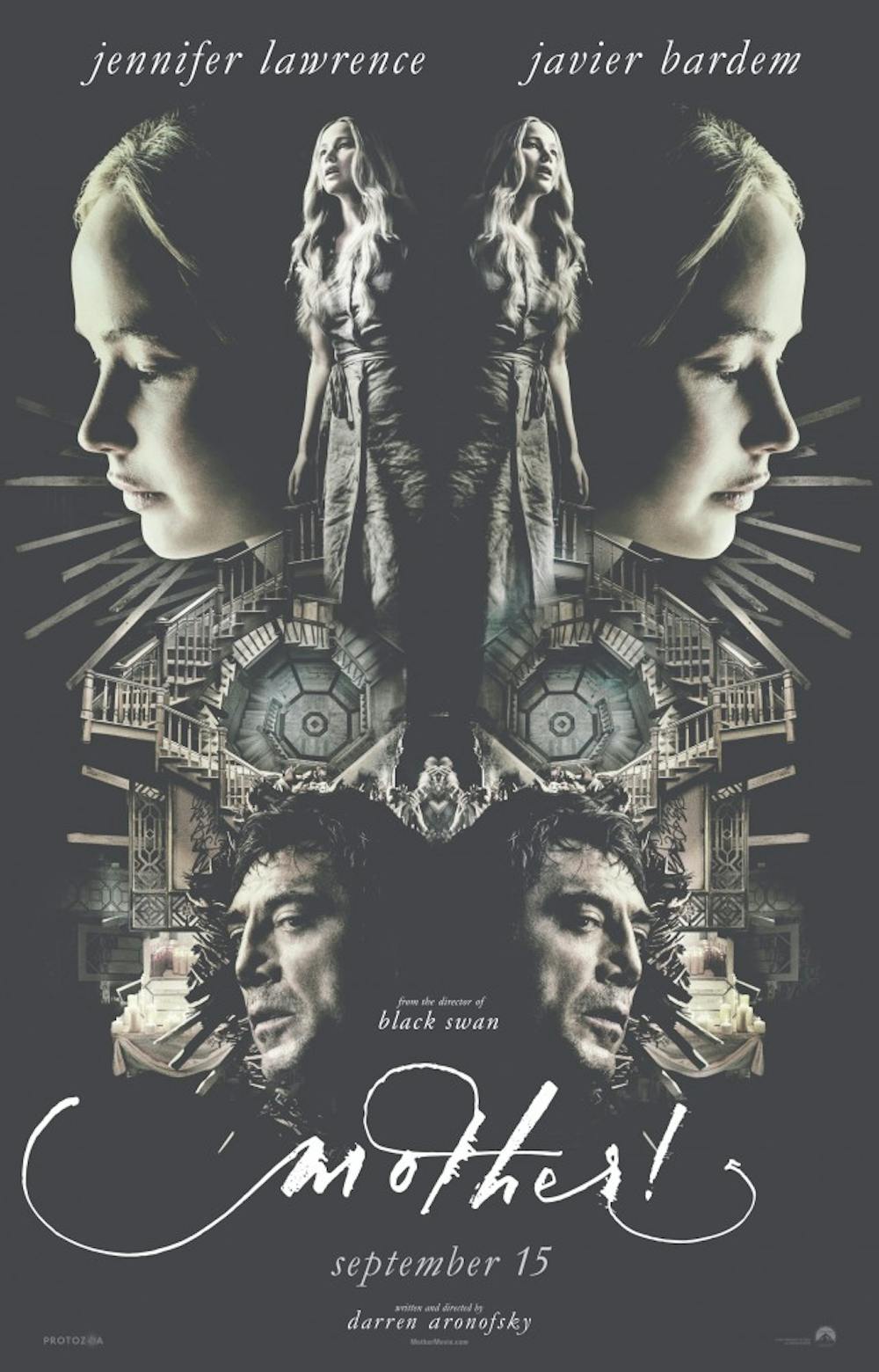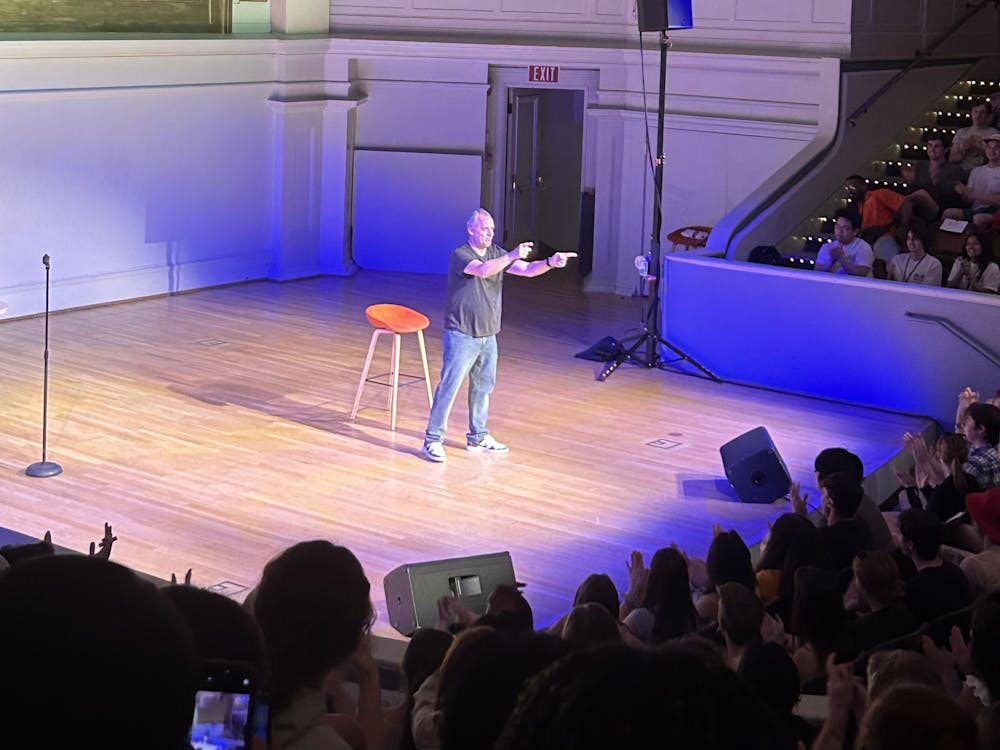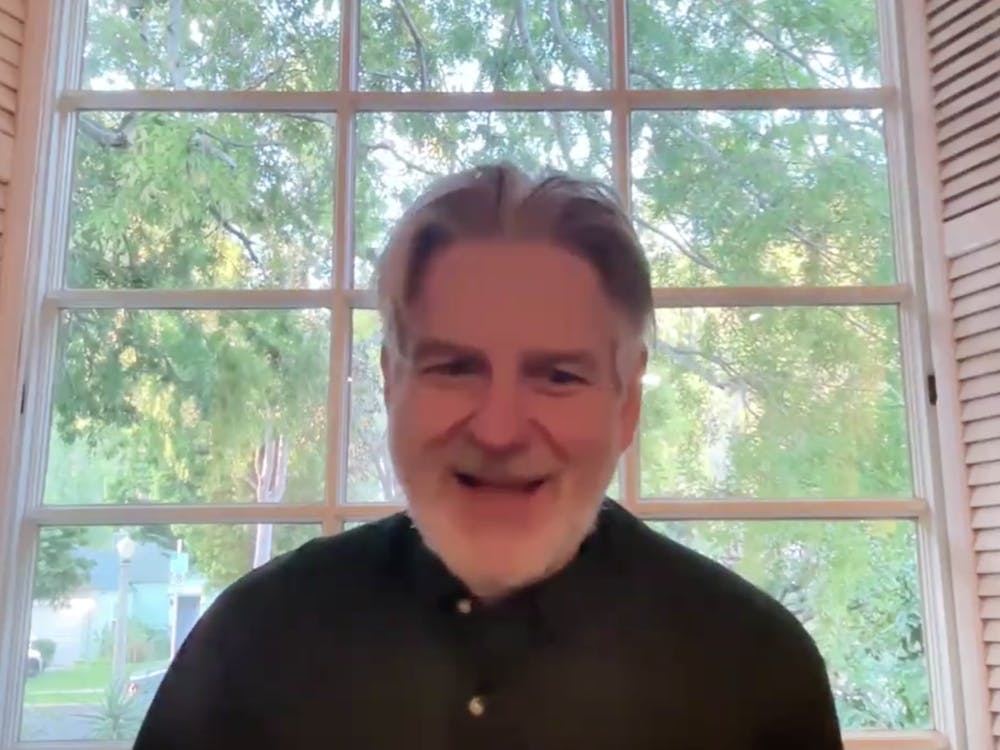“mother!” lures audiences in with cozy names like Jennifer Lawrence, Javier Bardem, Ed Harris and Michelle Pfeiffer only to remind them they are dealing with another familiar name — director Darren Aronofsky, the creator of “Requiem for a Dream” and “Black Swan.” Aronofsky’s technical skill is of unquestionably high caliber, but it is used to paint stories that perturb rather than please. Compared to the more successful summer box office horror hit, “It,” Aronofsky’s “mother!” is the one audiences will continue to think about — and be disturbed by — long after the credits roll.
Mother (Jennifer Lawrence) lives in an isolated mansion with her husband, Him (Javier Bardem), a successful poet struggling to produce his next work. Mother obsessively rebuilds and cares for the house, which Him reveals to have previously been destroyed in a fire. She wants to make the house a “paradise,” but Him’s writer’s block takes precedence over her efforts.
Suddenly, a man (Ed Harris) arrives at the door. Mother is reluctant to let the stranger enter, but Him is excited to have a visitor to “bring life into this house.” Soon, the man’s wife, Woman (Michelle Pfeiffer) arrives. Mother eventually enters a world of paranoia, helplessness and utter chaos as more visitors arrive.
As far as symbolism goes, the film is saturated with scenes and characters that represent figurative ideas both obvious and ambiguous. A basic knowledge of Genesis from the Bible is enough to point out the transparent extended metaphor of Aronofsky’s script, but plenty of interpretations ranging from the state of humanity in general to the horrors of fame exist as well.
Such a complex premise sounds inviting at first, but Aronofsky’s script and character development suffer as a result of this flashy intricacy. The dialogue often feels contrived and of minuscule importance compared to the visuals of the film — audiences can try to put pieces of the puzzle together from dialogue, but it will be an unrewarding attempt for the most part. Similarly, the characters lack “real” names and are clearly puppets of a larger metaphor where it is difficult to be emotionally invested in them as if they were actual individuals.
The characters are difficult to relate to due to one other key aspect of the film. The entire film is shot from Mother’s perspective, which is disconnected from all other characters except Him. Mother merely watches the action and has no relationship to any of the nameless intruders that enter her house. Fans of Jennifer Lawrence — and of convincing acting in general — will be pleased by close-up shots of Mother’s psychological unraveling. Although Bardem, Harris and Pfeiffer offer convincing performances, Lawrence’s performance upstages them all, as her character is the only one given the opportunity to be slightly more than a metaphorical Lego piece.
Despite flat character development, the unnerving visuals emphasize relatable fears — the kind that are horrifying because they are deeply emotional and anxiety-inducing rather than laughable jump-scares. This is not to say there are no jump scares, but they are by no means the most powerful tactic used to put audiences on edge. Indeed, Aronofsky focuses on all the creepy things people love about old, secluded houses — creaky and sharp noises, fire furnaces which unexpectedly rev up in the basement laundry room and the pulse of a beating heart in the walls.
However, Aronofsky’s true strength in disturbing audiences stems from his technical skill and the surrealism that results from his distinct close-ups, irritating emphasis of sharp sounds and irrational character interactions. Mother’s diffidence and disconnection to the other characters actually accentuates Aronofsky’s nightmarish style, and a sometimes shaky camera that follows Mother’s psychological breakdown highlights primal fears of invasion and chaos.
Decidedly, “mother!” is a tough watch for the sensitive viewer. Nonetheless, Aronofsky’s distinct visuals and thought-provoking premise make the torture worth it — at least once.





